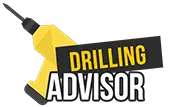Drill bits are available in a wide range of sizes to attain the precision that each project requires. Each tool uses a unique naming convention that includes numbers and letters, all with the hope of promoting accuracy.
When choosing the ideal bit size for #10 screws, it’s important to consider the screw type, the thread design, and the materials used in their construction. Keep reading for a better understanding of how to pick the best drill bit for a #10 screw!
Is it Necessary to Pre-Drill a Pilot Hole?
Pre-drilling holes may seem like an unusual task since they already have sharp ends. We all know that self-tapping screws have no problem penetrating softwood with the assistance of an impact or drill driver.
However, drilling pilot holes would be necessary for tougher materials and larger diameter holes as it would make it easier to place the screw in the accurate position. Further, if you will be fastening several boards, the pre-drilling would help prevent the screws from breaking off or the material cracking as you work on it.
When dealing with thick metal plates, the hole’s size should be equivalent to the core diameter’s size, while for the hardwoods, the hole should be equal to the screw’s minor diameter. Note that this size could be marginally smaller for softer woods.
If you decide to ignore the pilot hole or drill smaller than required, hairline cracks will form in the material when you insert the screw.
What Size Drill Bit for a #10 Screw?
Here, we shall split the tools into different categories so that everything is clearer for you. For instance, you will need a #21 drill bit for your pilot hole if you have type A, AB, and B self-tapping screws and type 25 thread-cutting screws.
The next category of tools we shall look at is #10 hammer drive or U-drive screws, whose ideal drill bit size for the pilot hole would be #20.
Let’s also discuss the use of hardwoods and softwoods in your project, whereby a standard #10 wood screw would be perfect for the fastening work. In this case, you will have to use a 9/64-inch bit for a straight pilot hole.
Lastly, you will also need a C102 countersink for the whole project to be less complicated by holding the boards in position.
Read More:
Top Quality Router Bit for Cutting Letters
Closing Remark
When everything is set, all that remains is for you to drill from a horizontal or vertical position to create a pilot hole of your preferred accuracy. From here, place the #10 screw with the ultimate precision to attain the perfect bond. With that, we hope that our article has been helpful in guiding you towards drilling the perfect pilot hole for your project.

